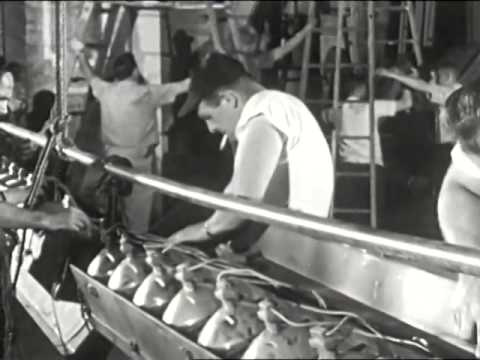Platelayer Job: Duties & Salary

Platelayer Job Description Template
Platelayer Job Description A platelayer, also known as a track worker or a track maintenance technician, is responsible for constructing, maintaining, and repairing railway tracks. They play a crucial role in ensuring the smooth and safe operation of trains. Platelayers are required to have a strong understanding of railway engineering principles and possess practical skills in track laying and maintenance. Their main responsibilities include inspecting tracks for any signs of wear or damage, repairing or replacing damaged rails, sleepers, and other track components, and ensuring that tracks are aligned correctly. One of the important skills for a platelayer is the ability to operate various tools and machinery used in track construction and maintenance, such as rail trolleys, jacks, and tampers. They also need to have good physical fitness as the job often involves manual labor, such as lifting heavy equipment and working in all weather conditions. Safety is a top priority for platelayers as they often work in close proximity to moving trains. They are required to follow strict safety protocols, wear protective gear, and be vigilant at all times to prevent accidents or injuries. In addition to their technical skills, platelayers need to have good teamwork and communication skills as they often work in teams and need to coordinate with other railway personnel, such as signalers and train drivers. Overall, the role of a platelayer is crucial in maintaining the integrity and safety of railway tracks, ensuring the efficient operation of trains, and providing a reliable transportation service for passengers and goods.Platelayer Responsibilities
Platelayer Requirements
How Much Does A Platelayer Make?
Platelayer Salary
| Position | Experience | Salary |
|---|---|---|
| Platelayer | 0-2 years | $30,000 – $40,000 |
| Platelayer | 2-5 years | $40,000 – $50,000 |
| Platelayer | 5+ years | $50,000 – $60,000 |
Platelayer salary varies based on experience. For those with 0-2 years of experience, the salary ranges from $30,000 to $40,000 per year. Platelayers with 2-5 years of experience can expect to earn between $40,000 and $50,000 annually. Those with 5 or more years of experience in the field can earn a salary ranging from $50,000 to $60,000 per year. It’s important to note that these salary ranges are approximate and may vary depending on factors such as location, company size, and individual qualifications.
Platelayer Salaries by Country
Top Paying Countries for Platelayer
| Country | Salary (USD) |
|---|---|
| Switzerland | 70,000 |
| Australia | 60,000 |
| United States | 55,000 |
| Canada | 50,000 |
| Germany | 45,000 |
In the field of platelaying, Switzerland is the top paying country with an average salary of $70,000. Australia comes in second with an average salary of $60,000, followed by the United States with $55,000. Canada and Germany complete the list with average salaries of $50,000 and $45,000 respectively. These figures may vary depending on the level of experience, qualifications, and the specific company or project. Platelayers play a crucial role in the construction and maintenance of railway tracks, ensuring safe and efficient transportation.
A video on the topic Platelayer
Video Source : Gez NeacyInterview Questions for Platelayer
1. What is the role of a Platelayer?
A Platelayer is responsible for laying and maintaining railway tracks, ensuring they are properly aligned, leveled, and secured.
2. What are the key skills required to be a successful Platelayer?
Key skills required for a successful Platelayer include excellent physical fitness, attention to detail, problem-solving abilities, teamwork, and knowledge of railway safety regulations.
3. Can you explain the process of laying railway tracks?
The process of laying railway tracks involves preparing the ground, setting up the framework, placing sleepers, attaching rails to the sleepers, and securing them using fastening systems. This is followed by aligning and leveling the tracks to ensure smooth train movement.
4. How do you ensure the safety of railway tracks?
To ensure the safety of railway tracks, a Platelayer regularly inspects the tracks for any defects, such as loose fastenings or damaged sleepers. They also perform routine maintenance tasks like removing debris, repairing minor damages, and replacing worn-out components.
5. What are the challenges faced by a Platelayer?
Challenges faced by a Platelayer include working in all weather conditions, often during night shifts, and being exposed to potential hazards like moving trains and heavy machinery. They also need to be vigilant and quick in responding to emergency situations.
6. How do you ensure proper alignment of railway tracks?
To ensure proper alignment of railway tracks, a Platelayer uses specialized tools like a track gauge, level, and string lines. They measure and adjust the track position, angle, and elevation to meet the required standards.
7. How do you handle track maintenance during train operations?
During train operations, track maintenance is done during scheduled maintenance blocks or under strict protocols that ensure the safety of the workers and trains. Platelayers coordinate with other railway personnel to ensure smooth maintenance activities without disrupting train services.
8. Can you describe the process of replacing damaged railway sleepers?
The process of replacing damaged railway sleepers involves removing the old sleeper, preparing the foundation, placing the new sleeper, and securing it with fastenings. The track is then properly aligned and leveled to ensure seamless train movement.
9. How do you stay updated with the latest railway safety regulations?
Platelayers stay updated with the latest railway safety regulations by undergoing regular training programs conducted by railway authorities. They also actively participate in safety briefings, workshops, and seminars organized by the railway industry.
10. What is your approach to working in a team as a Platelayer?
As a Platelayer, I believe in effective communication, cooperation, and collaboration within the team. I ensure that tasks are divided and coordinated efficiently, and I am always ready to assist my team members when needed. Together, we strive to achieve our goals and maintain the highest level of safety and efficiency in our work.
The Best Universities For The Platelayer Profession.
- University of Cambridge
- University of Oxford
- Stanford University
- Massachusetts Institute of Technology (MIT)
- Harvard University
- California Institute of Technology (Caltech)
- Princeton University
- University of Chicago
- Imperial College London
- Swiss Federal Institute of Technology Zurich
- University of California, Berkeley
- Yale University
- University of California, Los Angeles (UCLA)
- University College London (UCL)
- Columbia University
- University of Pennsylvania
- University of Michigan-Ann Arbor
- Johns Hopkins University
- ETH Zurich – Swiss Federal Institute of Technology
- University of Toronto






